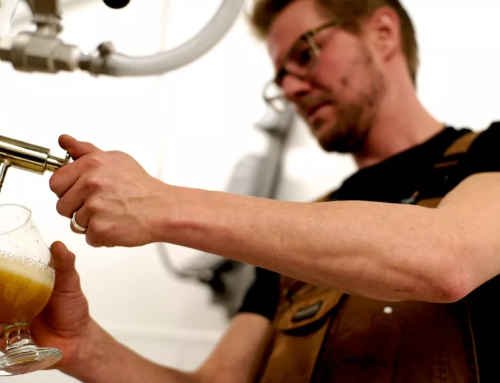Leeches in Veterinary Therapy -
Register with www.pretasurvivre.com and follow the hirudotherapy learning course

The saliva of medicinal leeches, e.g. Hirudo medicinalis and Hirudo verbana, commonly used in hirudotherapy, contains more than 100 bioactive substances with a variety of therapeutic effects, including anticoagulant, vasodilator, thrombolytic, anti-inflammatory and anaesthetic properties.
Recently, leeches have been used with great success in veterinary medicine to treat many diseases of animals, especially dogs, cats and horses.
The most common indications for the use of leeches are hip and elbow dysplasia, acute and chronic arthritis, diseases associated with inflammation of the tendons, ligaments and fascia, diseases of the vertebrae and the treatment of scars.
Leech therapy is a painless procedure that takes an average of 30 to 120 minutes, depending on the size of the animal.
All leeches used in medical procedures must come from certified organic farms only.
Maintaining sterile conditions for the culture, transport and storage of medical leeches is very important to protect the animals from microbial infection.
Hirudotherapy is used successfully in veterinary medicine, particularly when traditional treatments are not effective, when the effects of treatment are too slow, or after surgery, when tissues may be threatened by venous congestion.

A little history
Leeches have been used to treat certain illnesses since ancient times.
Hirudotherapy evolved over the years, reaching a peak of popularity in Europe between 1825 and 1850.
For several years now, there has been renewed interest in the use of leeches, particularly in the treatment of congestive complications following plastic and reconstructive surgery.
Hirudotherapy is being used more and more successfully in veterinary medicine, particularly when traditional treatment is not effective or the effects of treatment are too slow.
The main indication for hirudotherapy is the need to save tissue whose viability is threatened by venous congestion.
In Poland, although a few clinics offer leech treatment, few pet owners are interested in this method of treatment.
Hirudotherapy is often undertaken when all other methods have failed, but this safe and effective form of treatment is set to become increasingly popular in veterinary medicine.

The biology of medicinal leeches
Leeches are segmented, hermaphroditic, blood-sucking annelid worms that are permanent or temporary external parasites of many animals such as fish, amphibians, waterfowl and mammals, including humans.
Medicinal leeches belong to the order Arhynchobdellida, family Hirudinidae.
Of the 650 species of leeches described in the world, only 15 are classified as medicinal leeches.
In Europe, three species of leech, Hirudo medicinalis, H. verbana and H. orientalis, occur in the wild, but only H. medicinalis is a legally protected species in this region. At present, H. verbana is the species most commonly available from licensed commercial leech farms.

The European medicinal leech inhabits freshwater ponds with abundant weed growth in temperate climates.
It occupies the deciduous tree zone from Great Britain and southern Norway to the southern Urals, and probably as far as the Altai mountains.
The medicinal leech has a cylindrical body, flattened dorsoventrally, divided into 33 or 34 segments.
Members of this group measure up to 20 cm long, have 5 pairs of eyes on their head and search for their host using an olfactory system.
Adult leeches have a large posterior suction cup, which they use for crawling, and a smaller suction cup on the head that encloses a mouth with three jaws.
These jaws contain small pores and glandular cells through which salivary material is released into the host wound.
The saliva secreted by medicinal leeches contains over 100 bioactive substances, including hirudin, hyaluronidase, calin, destabilase, eglin and bdellin.
The intestinal tract of leeches consists of an armed mouth, pharynx and oesophagus, with a crop, stomach, intestine and hindgut.
After feeding, the blood is stored in the lateral diverticula of the crop, which has 10 pairs of lateral pouches, the crop caeca, and a pair of posterior crop caeca to provide additional storage space.
During ingestion, the blood is mixed with anticoagulant secretions.
Leeches can ingest a quantity of blood close to 10 times their own weight and may not need to be fed for up to a year after their last meal.
Blood cells are concentrated by excreting plasma from ingested blood.
They can be stored for several months and are digested by symbiotic bacteria living in the leeches' crop and intestine.
Full embryonic development takes place inside a cocoon and consists of two distinct life stages, cryptolarva and juvenile.
In the natural environment, the eggs in the cocoons are deposited in the damp soil on the banks of inhabited ponds.
After leaving the cocoon, juvenile leeches must enter the aquatic environment, where they grow by feeding on the blood of aquatic animals.

Leeches in medicine
Leeches have been used successfully in human and veterinary medicine because they produce a large number of therapeutic substances.
One of the most important is hirudin, which is known for its strong antithrombotic properties.
In 1950, the German Fritz Marquardt isolated a protein from H. medicinalis that he called hirudin, and demonstrated its thrombin-inhibiting properties.
Hirudin is still considered the most powerful natural inhibitor of thrombin, thanks to its high affinity for the protein.
The active effect of hirudin is based on synergies with other components of leech saliva, such as antistasin and ghilanten, which are powerful specific inhibitors of blood coagulation factor Xa.
Bdellin is a substance that exerts an anti-inflammatory effect by inhibiting the protease involved in the spread of inflammation.
Hyaluronidase, an enzyme with antibiotic properties that breaks down hyaluronic acid, facilitates the penetration and diffusion of pharmacologically active substances into tissues.
Other important substances produced by leeches may include substances that reduce blood viscosity and have anti-cancer properties.
In addition, leeches produce a number of important neurotransmitters such as dopamine, serotonin, acetylcholine and enkephalin, which reduce the patient's perception of pain and have a relaxing effect on the whole body.
The spectrum of pharmacological activities of leech saliva is already vast, and other therapeutically active compounds are being studied using recombinant DNA technology.
Pharmaceutical companies are looking to expand their repertoire of leech salivary components as anticoagulants.


Maintenance and care
Leeches used in the treatment of humans and animals must come from specialised farms certified for medical purposes.
It is absolutely forbidden to collect leeches in their natural environment, as they can be contaminated by viruses, bacteria, fungi and even parasites.
It is not possible to guarantee that leeches collected in the natural environment have not previously fed on the blood of infected animals.
After transport from the breeding farms, only healthy, vital animals should be chosen.
Leeches should be mobile, flexible and sensitive to the therapist's touch.
They should be kept in lockable glass or ceramic containers, with non-chlorinated water that should be changed weekly in winter and twice a week in summer.
The volume of water per animal should not be less than 0.7 litres, with generally 10 to 15 leeches in a large jar.
Animals should be kept without food at a temperature of 4-13°C.
Hirudotherapy procedure

Fig. 1
Leeches have an extremely wide range of applications in veterinary medicine.
The most common patients are dogs, cats and horses, but even farm animals can be treated with leeches.
Hirudotherapy treatments must be carried out by qualified hirudotherapists.
Patients receive between one and seven treatment sessions, depending on the disease being treated.
The number of leeches applied during a treatment session depends on the patient's species, size and individual characteristics.
Usually, one leech is applied for every 10 kg of an animal's body weight, while 5 to 15 leeches are used per animal in the case of horses.
The therapist places the leeches on the affected sites (Fig. 1), after which the leech pierces the host's skin with its three sharp jaws, leaving a Y-shaped wound.
As the leech's saliva also contains an anaesthetic that prevents the animal from feeling the bite, the animals appear to remain calm.
The leech must remain on the skin until it is sated, which generally takes 30 to 60 minutes in dogs and cats and 40 to 120 minutes in horses.
When the leech falls off, bleeding continues at the site of the bite, which is part of the therapy.
This bleeding should not be inhibited for a few hours, resulting in the loss of 50 ml of blood.
Once the bleeding has stopped, the therapist treats the area with bandages.
Indications and contraindications
The use of leeches in veterinary medicine has the same indications as in human medicine.
The use of leeches in animals is indicated in cases of venous congestion and blood clots, particularly after surgery, orthopaedic trauma, limb amputation and castration of males, as well as poor wound healing.
The rescue of tissue flaps whose viability is threatened by venous congestion is the primary indication for leeching.
For the dermatological surgeon, leeching can be useful in cases where skin flaps may be lost due to obstruction of venous outflow.
In animals, veterinary leeches can also be used in cases of dysplasia, inflammatory conditions or injuries to tendons, fascia or vertebrae, among others.
Table 1 presents a list of diseases in various animal species for which the use of hirudotherapy is indicated.
Haemophilia and blood coagulation problems are absolute contraindications to hirudotherapy, as are anaemia, acute infections, diseases that cause immunosuppression, pregnancy, bleeding disorders, skin cancer and fungal skin diseases.
Aeromonas veronii bv. sobria, a Gram-negative bacterial species, is known to live in symbiosis in the digestive tract of H. medicinalis, producing enzymes that allow the digestion of blood meals.
Table 1. The main indications for veterinary hirudotherapy
| Dogs | Cats | Chevaux |
| - postoperative wound
- spinal osteoarthritis - discopathies - ponytail syndrome - hip and elbow dysplasia - neuritis - ear eczema - poor wound healing - post-surgical scars - tendonitis - tenosynovitis - mastitis |
- postoperative wound
- discopathies - eczema - abscesses - torn ligament - knee dysplasia - inflammation of the knee - neuritis - mastitis
|
- sludge lump - laminitis
- tendonitis - tenosynovitis - ataxias - myositis - spinal osteoarthritis - arthritis in the shoulder joint
|
This organism was noted in 88% surgical site infections reported after human medical treatment with leeches, probably due to transmission of A. veronii bv. sobria from the leech's digestive tract.
Recent genetic studies have shown that bacterial infections initially diagnosed as caused by A. hydrophila were in fact caused by A. veronii bv. sobria.
Some authors suggest that the risk of infection can be reduced by soaking the leeches in 0.02 % chlorhexidine hydrochloride for 10 to 15 seconds before application to the wound, or by applying prophylactic parenteral antibiotics to the animal prior to application of the leeches.
In very rare cases, local skin irritation or anaphylaxis may occur with veterinary hirudotherapy.
The potential benefits of hirudotherapy far outweigh the risks associated with wound infection.
The results of the therapy are rapid and bring tangible benefits to patients.
Treatment with leeches is relatively cheap and safe, and often proves to be the best solution when conventional treatments fail.
Register and take the hirudotherapy certification course with Ready to Survive www.pretasurvivre.com/courses/










What is the content of the training?
Hello,
You can register for free here to see the content of the course.
Please do not hesitate to contact us if you require any further information. We look forward to hearing from you!
Hi, great article. I've ordered my first leeches!
Hello. Congratulations and happy hirudo sessions!
Interesting article, I will check out your training programme!
Thank you for your comment. You can register for free here https://pretasurvivre.com/courses/ to consult the programme.